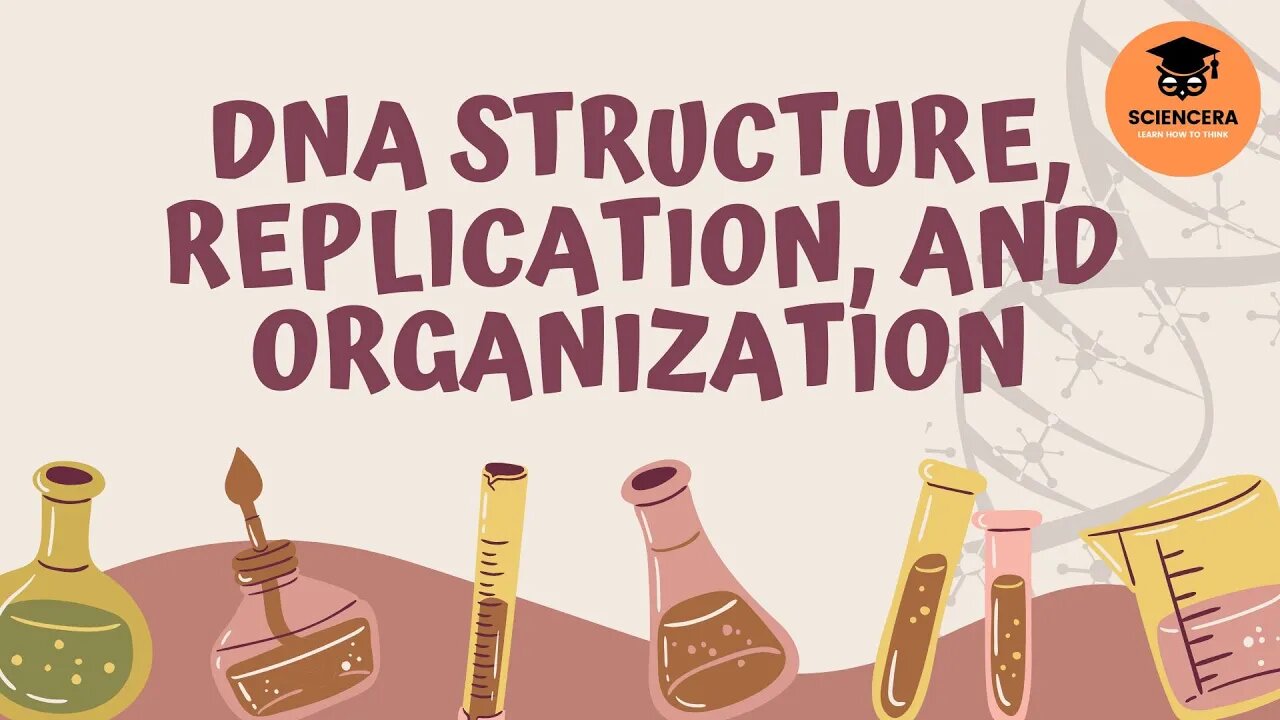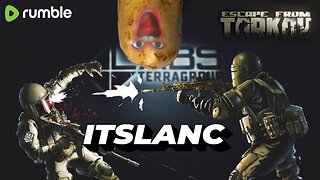Premium Only Content

Biology: DNA Structure, Replication, and Organization - Sciencera
In this video, Sciencera introduces us to that wondrous molecule deoxyribonucleic acid - also known as DNA - and explains how it replicates itself in our cells.
References:
http://www.nature.com/nature/dna50/wa...
http://publications.nigms.nih.gov/the...
http://rst.gsfc.nasa.gov/Sect20/A12.html
http://www.nature.com/scitable/topicp...
http://www.uic.edu/classes/phys/phys4...
http://www.buzzle.com/articles/dna-re...
http://www.dnareplication.info/stepso...
http://salamandercandy.wordpress.com/...
http://www.sdsc.edu/ScienceWomen/fran...
http://www.fmi.ch/members/marilyn.vac...
http://www.strangescience.net/rfrankl.
DNA, or deoxyribonucleic acid, is the hereditary material in humans and almost all other organisms. Nearly every cell in a person’s body has the same DNA. Most DNA is located in the cell nucleus (where it is called nuclear DNA), but a small amount of DNA can also be found in the mitochondria (where it is called mitochondrial DNA or mtDNA).
The information in DNA is stored as a code made up of four chemical bases: adenine (A), guanine (G), cytosine (C), and thymine (T). Human DNA consists of about 3 billion bases, and more than 99 percent of those bases are the same in all people. The order, or sequence, of these bases determines the information available for building and maintaining an organism, similar to the way in which letters of the alphabet appear in a certain order to form words and sentences.
DNA bases pair up with each other, A with T and C with G, to form units called base pairs. Each base is also attached to a sugar molecule and a phosphate molecule. Together, a base, sugar, and phosphate are called a nucleotide. Nucleotides are arranged in two long strands that form a spiral called a double helix. The structure of the double helix is somewhat like a ladder, with the base pairs forming the ladder’s rungs and the sugar and phosphate molecules forming the vertical sidepieces of the ladder.
An important property of DNA is that it can replicate, or make copies of itself. Each strand of DNA in the double helix can serve as a pattern for duplicating the sequence of bases. This is critical when cells divide because each new cell needs to have an exact copy of the DNA present in the old cell
BE MY FRIEND:
📸Add me on Instagram: https://www.instagram.com/p/CdNgDxMu6sO/?igshid=YmMyMTA2M2Y=
🐦Add me on Twitter: https://twitter.com/Sciencera12?t=SevFfcBpV_rgEz78UH1fLQ&s=09
📕Add me on Facebook: https://www.facebook.com/Sciencera.LearnToThink/
ABOUT MY CHANNEL:
Hi! I’m Rubbia Khalid. On my channel, you will find Educational Vedios. I love sharing UNISA modules notes. for example - anatomy and physiology / biochemistry/ immunology etc.] with you guys as I experience them myself.
Subscribe here to see more of my videos in your feed!
http://www.youtube.com/channel/UCoAm4bo_f46ZUZrW_yYM7bg?sub_confirmation=1
Feel free to add me on Instagram/Facebook/Snapchat/Tiktok: @sciencera.learntothink
👇👇👇👇👇👇👇👇👇👇👇👇👇👇👇👇👇
#PLEASE #LIKE #COMMENT #SHARE AND #SUBSCRIBE!!
FOR PDF #NOTES PLEASE CONTACT: +27 746520579
BUY NOTES ON:
https://www.stuvia.com/user/sciencera
JOIN US ON TELEGRAM
https:/t.me/sciencera
-
 4:47:50
4:47:50
The Why Files
2 days agoCOMPILATION: UFOs and Aliens Vol.2 | They are NOT our friends
75.7K51 -
 54:47
54:47
Side Scrollers Podcast
1 day agoSide Scroller Presents KING OF THE KART | MASSIVE MARIO KART TOURNAMENT
145K10 -
 14:47
14:47
GritsGG
19 hours agoRumble Tournament Dubular! Rebirth Island Custom Tournament!
50.4K3 -
 LIVE
LIVE
CassaiyanGaming
2 hours agoClean Water Charity Stream Day 1 - Black Ops 6 Level Grinding
70 watching -
 LIVE
LIVE
PudgeTV
4 hours ago🟣 Greak: Memories of Azur | Gaming on Rumble | September Charity Water Campaign
79 watching -

LarryDickmanGaming
11 hours agoI am what I am and that's all that I am.
12.5K -
 2:39:02
2:39:02
The Pascal Show
20 hours ago $3.32 earned'HE'S THE DEVIL!' Former Mother In Law Breaks Silence On Jake Haro & Emmanuel Haro Case
25.7K4 -
 5:30:10
5:30:10
SpartakusLIVE
15 hours ago#1 Verdansk Sniper gets HACCUSATIONS because of INSANE Headshots
67.9K4 -
 46:18
46:18
SB Mowing
3 days agoShe was LOSING HOPE but this SURPRISE CHANGED EVERYTHING
56.7K49 -
 10:00:10
10:00:10
ItsLancOfficial
14 hours agoWE LIVE 🔴WE LIVE 🔴 SUNDAY SUNDAYS!!!!!!! TARKOV
45.9K3